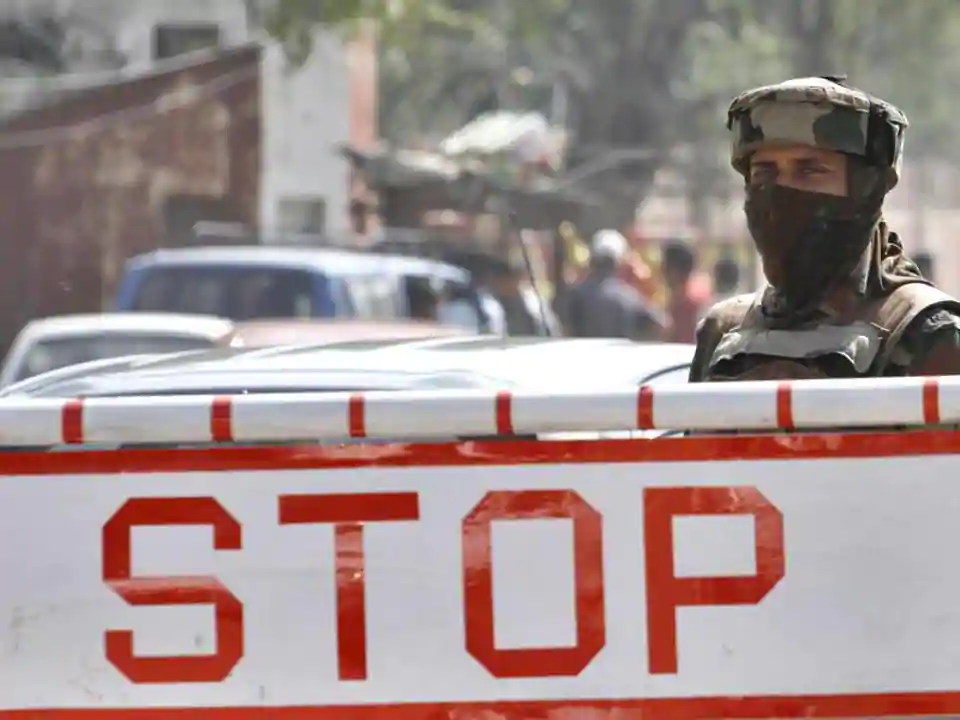
SOURCE: HT
Last week, finance minister Nirmala Sitharaman unveiled some major structural reforms in India’s moribund defence sector, as part of a coronavirus disease (Covid-19)-related macroeconomic stimulus, and the increase in foreign direct investment in defence manufacturing to 74% is radical. However, these are all policy changes that have “potential” and need to be implemented effectively before their outcome can be objectively assessed.
In the interim, India’s military security challenges, both current and long-term, came into unintended focus in this month even as the nation is grappling with the pandemic and its tragic impact on millions of citizens.
In early May, the Handwara terror attack saw the Indian Army losing a colonel and other personnel, pointing to the abiding tenacity of the low-intensity-conflict (LIC) that has been simmering in Kashmir. This is a complex proxy war where the external Pakistani stimulus has permeated the internal security strand with all its corrosive communal elements. It is unlikely to end soon.
Currently, India is managing an anomalous territorial challenge exigency, albeit of a low order. The eastern Ladakh sector saw a stand-off between Indian and Chinese soldiers in the Pangong Tso sector. While it is well below Doklam, media reports indicate that stones were used and it is encouraging that no ordnance was exchanged, as has been the pattern for well over three decades. But the long-festering territorial dispute with China, remains alive on the national security radar.
The more intriguing element is that Nepal summoned the Indian ambassador on May 11 to lodge a protest against the construction of a road by India in an area (Lipu Lekh pass to Dharchula in Uttarakhand) that Kathmandu claims lies within its territory.
To add to the spectrum of challenges, reports have emerged of China enhancing its Indian Ocean (IO) footprint in an island proximate to Male in the Maldives. Thus the possibility of a Hambantota kind of facility/access for the PLA navy in the IO cannot be ignored by Indian security planners.
And to cap this opaque security challenge, May also symbolises India’s complex nuclear-missile anxiety. The regional strategic environment became rough for India when China acquired nuclear weapons in October 1964; the subsequent Sino-Pakistan weapons of mass destruction (WMD) covert cooperation presented Delhi with a sui generis security conundrum. The Pakistani nuclear weapon that Beijing had enabled was being used to help terrorism stoked by religious fervour — what one had described as the nuclear weapon-enabled terrorism (NWET) dilemma.
India sought to assuage its latent WMD anxiety in May 1998 through the Shakti nuclear tests under Atal Bihari Vajpayee’s watch on May 11. Two decades later, the regional WMD-terror nexus has become muddier and the techno-strategic permutations are bewildering.
Does India have the wherewithal to deal effectively with this complex spectrum of national security challenges — one part of which is further aggravated by the current domestic political-ideological orientation? The answer is no — and for years experts have been pointing out that the annual defence allocation cannot sustain the kind of human, material and inventory profile that India needs. The last defence budget (excluding pensions) was Rs 3,37,000 crore. The amount available for modernisation of equipment and new acquisitions was shrinking to about 32% from the optimum of 40% of the budget.
In the backdrop of Covid-19, India’s macroeconomic challenge will worsen. The fiscal deficit is set to breach the recommended 3.5% limit; the only question is how high it would go. On May 8, the government pegged central borrowing for 2020-21 at Rs 12,00,000 crore — a significant increase from the budget estimate of Rs 7,80,000 crore. This fiscal stress will have a bearing on sectors earlier referred to as “non-plan” in the budgetary allocation, of which defence is a visible component. Thus, it is unlikely that the armed forces will receive anything close to Rs 3,50,000 crore (approx $46 billion). There are also unconfirmed reports of a budget slash in defence allocation due to Covid-19, ranging from Rs 40,000 to Rs 80,000 crore.
Given that the Covid-19 challenge and its accumulating debris of economic devastation and human destitution will be the higher national priority for some years, India will have to embark on a radical review of its security challenges and the road map to deal with this complex spectrum. Many nations are facing a similar predicament, but some abiding elements in the Indian context must be noted. Strategic geography and its attendant security exigencies will not change due to the pandemic. The low-intensity conflict stoked by Pakistan and the internal security fabric will be turbulent and the political apex will seek to assuage national sentiment in this regard.
What kind of military capability India needs, its technological contour, and how this can be both nurtured and sustained in an affordable manner in a post-Covid-19 world needs careful and objective assessment. Against this backdrop, some of the sweeping remarks attributed to the Chief of Defence Staff General Bipin Rawat, justifying lower defence spend and suggesting that the military may have been misrepresenting its requirements are perplexing, to put it mildly. One hopes this is not the distilled wisdom of Modi 2.0 in the security domain.
https://defencenewsofindia.com/recent-reforms-have-potential-india-must-decide-how-to-acquire-effective-military-capabilities-in-a-post-covid-world/






